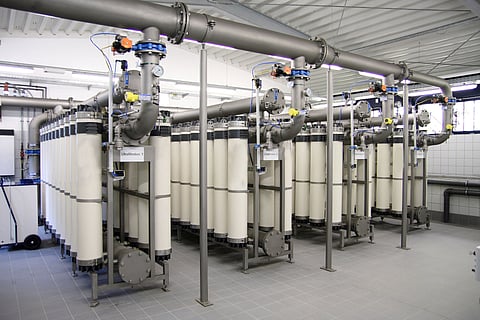Signs It's Time for a Change: Recognizing When to Replace Your RO Membranes
Introduction:
Reverse Osmosis (RO) membranes are vital components in water purification systems, ensuring the removal of contaminants and delivering clean, high-quality water. However, like any technology, RO membranes have a lifespan, and understanding when to replace them is crucial for maintaining optimal system performance. This blog post, we'll explore the key indicators that signal the right time to replace RO membranes.
Decreased Water Production: One of the initial signs that your RO membranes may need replacement is a noticeable decrease in water production. If your system is producing less water than usual, it could indicate that the membranes are losing efficiency and need to be changed.
Decline in Water Quality: An increase in the levels of impurities in the product water is a clear indication of membrane deterioration. Regular water quality monitoring is essential, and if you observe a decline in purity, it may be time to replace the membranes to maintain the desired water standards.
Elevated Operating Pressure: If the system's operating pressure has significantly increased, it suggests that the membranes are becoming more resistant to water flow. Higher pressure requirements may indicate membrane fouling or scaling, signalling the need for replacement.
Visible Scaling or Fouling: Physical inspection of the membranes is crucial. If you observe visible scaling or fouling on the membrane surface, it's a clear sign that they are no longer functioning optimally. Regular cleaning can help extend membrane life, but if scaling persists, replacement may be unavoidable.
Drop in Permeate Flow Rate: The permeate flow rate is a critical parameter in RO systems. A sudden drop in the flow rate could indicate membrane damage or blockage. Routine monitoring and comparison with baseline flow rates can help identify deviations and trigger timely replacement.
Increased Energy Consumption: As membranes age, the energy efficiency of the RO system may decrease. If you notice a gradual increase in energy consumption without any apparent changes in system demand, it could be an indication that the membranes are no longer performing efficiently.
Membrane Age and Manufacturer Recommendations: Every RO membrane has a specified lifespan provided by the manufacturer. Adhering to these guidelines and replacing membranes at recommended intervals can help avoid unexpected issues and maintain system performance.
Conclusion:
Knowing when to replace RO membranes is crucial for ensuring the longevity and effectiveness of your water purification system. Regular monitoring, coupled with an understanding of the key indicators mentioned above, empowers system operators to take proactive measures and replace membranes before their performance significantly deteriorates. To understand the signs better or about quality membranes, get an expert advice to check your water quality. To see the vast options in membranes, visit Water Today’s Water Expo in Chennai on 28, 29 February and 1st March 2024 at Chennai Trade Centre in Nandambakkam. Get expert opinion, attend the 2-day WATMAN International Conference at Chennai Trade Centre and gain knowledge. However, by staying vigilant and following manufacturer recommendations, you can continue to enjoy clean and high-quality water from your RO system for years to come.

